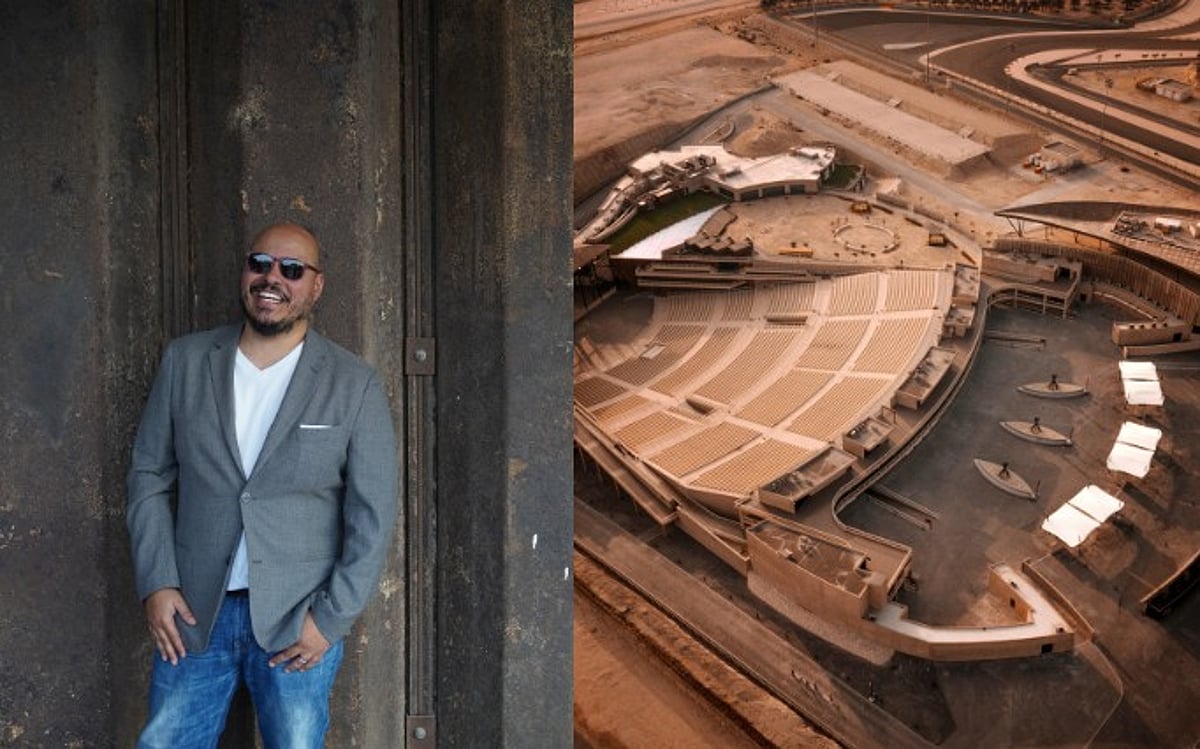Believing in a homegrown vision
That sense of passion would later become the driving force behind a project that brought a fresh twist to what homegrown creativity could achieve in Bahrain — a world-class amphitheatre built not by an international heavyweight, but by a local architect with a deeply personal vision.
He explains, “In Bahrain, and the Gulf as a whole, we’re lucky to have governments that support and advocate for local talent. While being up against international architectural firms comes with its challenges, we are consistently encouraged to push ourselves, with opportunities always offered to highlight up-and-coming homegrown talent.”
His overriding attitude: The passion for the design should be the only focus, and if that was conveyed well, he would be in good standing.
Balancing authenticity and creativity
Lockman believes that the most memorable designs are those that balance innovation with cultural identity — spaces that respect their surroundings and even elevate them. Innovation doesn’t mean complexity, as he notes. Sometimes the most powerful ideas are the simplest. By using local materials, minimising waste, and designing in harmony with the land, they can create architecture that’s both authentic and forward-looking.
At Al Dana, the landscape itself became a collaborator. “We didn’t impose a design,” he adds. “We let the terrain, the wind, and the sun guide us.”
A heritage that bridges worlds
For Lockman, passion isn’t just about design; it’s about identity. Being of Chinese-Egyptian heritage and raised in Bahrain, his multicultural roots have profoundly shaped his architectural perspective. As he says, such rich and varied roots are the additional tools you need to assimilate into surrounding identities.
For him, Bahrain is home, where he was born and the the country he knows best. Coupled with heritage, it allowed him flexibility to re-evaluate the vernacular from several points of view, assessing it through lens of other great architests that have offered the world reinterpretations of the traditional.
Lockman explains that the essence of Bahraini and Arab architecture lies in its simplicity and resourcefulness. It’s about using materials wisely, designing with the climate in mind, and staying true to cultural and social values. principles, he says, continue to guide how architects today interpret and evolve modern Arab design.
Defining authentic Middle Eastern architecture
Showcasing regional talent on a global stage
As recognition grows through platforms like Dubai Design Week and the RIBA International Awards, Lockman sees a new chapter for Middle Eastern architecture emerging. These platforms are vital for giving regional architects visibility and credibility on a global stage, as he observes. More importantly, they allow people to tell our own stories.
For him, awards are not about prestige but progress. As he says, we need to keep elevating regional talent and giving them platforms to showcase their work alongside the best in the world, he adds. Being shortlisted for the RIBA International Awards shows that architecture from our region can be visionary, responsible, and deeply rooted in culture.
Designing with Nature in mind
As the UAE and wider Gulf push forward with sustainability goals under Vision 2071, he emphasises the importance of designing with nature, not against it. “We need to move beyond greenwashing and design with nature rather than against it. If we do this, we can build cities that are resilient, beautiful and deeply connected to their environment, even protecting the nature around us.”
Sustainability, he insists, is not just ethical — it’s practical. “Choosing to work with sustainable materials, design with the surrounding environment in mind and adhere to sustainability best practice is not just environmentally responsible, but economically viable. For example, at Al Dana, quarrying local rock from the site itself was not just a sustainable material alternative, but also helped us to come in under budget. Using the local rock also helped us to reflect the beauty of the surrounding environment in our design. These are just some of the underlying vernacular principles – economy of means and materials.”
Lakshana is an entertainment and lifestyle journalist with over a decade of experience. She covers a wide range of stories—from community and health to mental health and inspiring people features.
A passionate K-pop enthusiast, she also enjoys exploring the cultural impact of music and fandoms through her writing.

